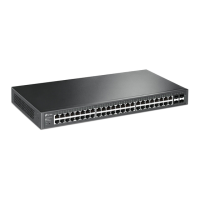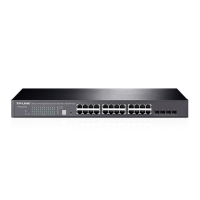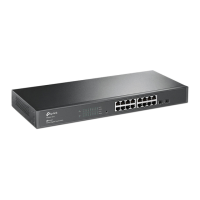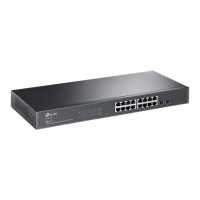Configuration Guide 70
Managing System PoE Configurations
Figure 6-5 Configuring System Power Limit
Unit Displays the unit number.
System Power
Limit
Specify the maximum power the PoE switch can supply.
2) In the Port Config section, select one or more ports and configure the following two
parameters: Time Range and PoE Profile. Click Apply and the PoE parameters of the
selected PoE Profile, such as PoE Status and PoE Priority, will be displayed in the table.
PoE Status Displays the PoE function for on corresponding port. The port can supply power
to the PD when its status is enable.
PoE Priority Displays the priority level for the corresponding port. When the supply power
exceeds the system power limit, the switch will power off PDs on low-priority
ports to ensure stable running of other PDs.
Power Limit Displays the maximum power the corresponding port can supply.
Power
Limit Value
(0.1W-30.0W)
Displays the power limit value.
Time Range Select a time range, then the port will supply power only during the time range. For
how to create a time range, refer to
Time Range Configuration
.
PoE Profile Select the PoE profile for the desired port. If one profile is selected, you will not be
able to modify PoE status, PoE priority or power limit manually.
Power (W) Displays the port’s real-time power supply.
Current (mA) Displays the port’s real-time current.
Voltage (V) Displays the port’s real-time voltage.
PD Class Displays the class the linked PD belongs to.
Power Status Displays the port’s real-time power status.

